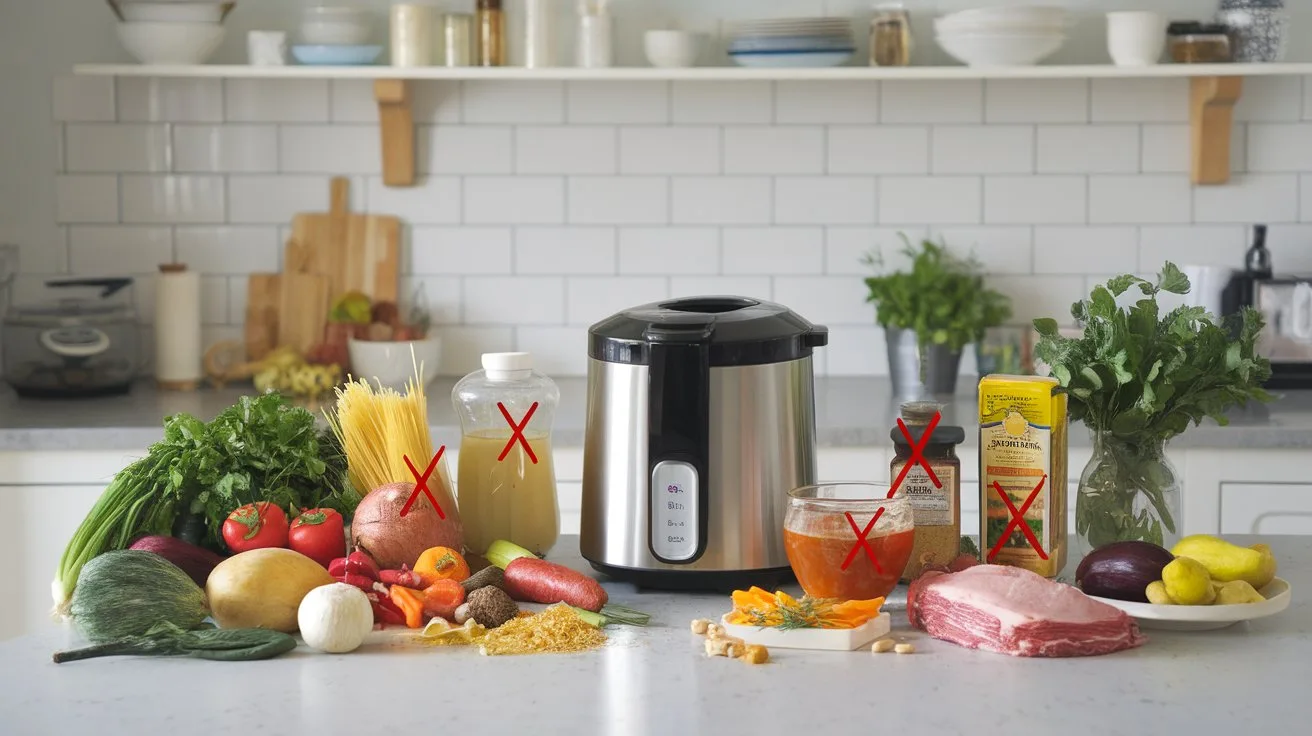Soup makers are a fantastic kitchen companion, turning raw ingredients into velvety soups with minimal effort. But as convenient as they are, these appliances come with a set of unwritten rules—especially when it comes to what you shouldn’t toss inside. Whether you’re new to using a soup maker or want to refine your skills, knowing what not to put in can save you from frustrating mishaps. Let’s dive into the details!
A soup maker simplifies cooking in ways that feel almost magical. You just add your ingredients, hit a button, and voilà—homemade soup in minutes! Yet, even the best gadgets have their limits. Misusing a soup maker can lead to poor results, unnecessary wear and tear, or even damage.
Before you start experimenting, it’s vital to understand your machine’s mechanics. Soup makers usually include blending blades, heating elements, and specific capacity guidelines. The appliance thrives when used correctly, but it can misfire if overloaded or exposed to the wrong ingredients. Curious about what to avoid? Keep reading for the full scoop.
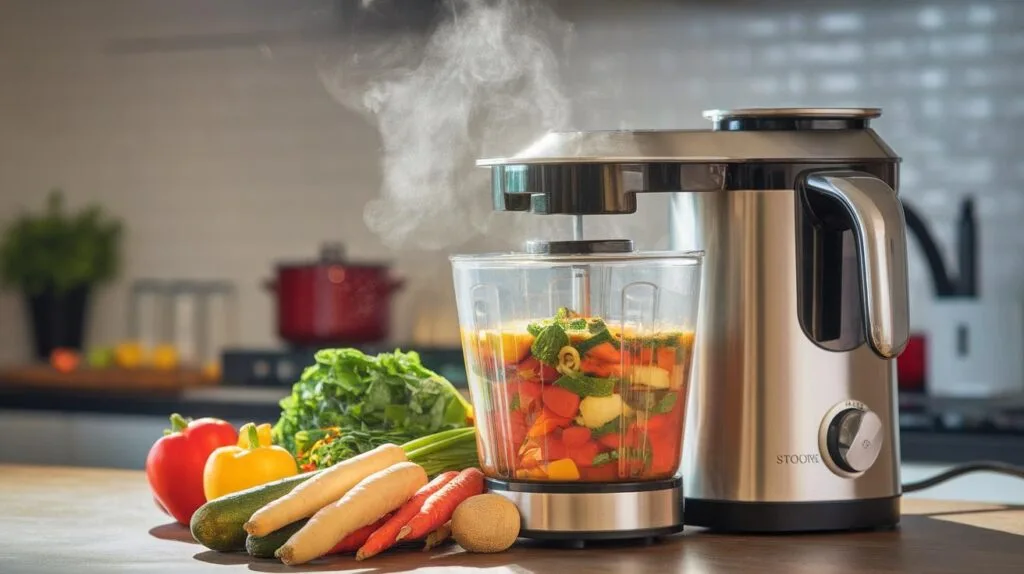
The Role of a Soup Maker in the Kitchen
A soup maker is like having a personal chef at home, blending and cooking your ingredients with precision and ease. It’s perfect for creating both classic soups like a creamy Shepherd’s Pie Soup. While its versatility makes it a staple appliance, understanding ingredient limits ensures it remains efficient and delivers the best results.
However, this versatility comes with boundaries. Adding unsuitable ingredients can cause technical hiccups or less-than-appetizing results. To make the most of your soup maker, you’ll need to balance creativity with caution.
Why Knowing What Not to Add Matters
Why bother learning what not to put in a soup maker? Simple: it’s all about performance and longevity. Using incompatible ingredients can lead to clogged blades, burned-out motors, or unappealing textures. Plus, some items may not cook evenly or could even pose safety risks.
By knowing what to skip, you ensure your soup maker stays in top shape while delivering consistent, delicious results. After all, who wants a soup disaster when a warm, comforting bowl is just minutes away?
Avoiding Common Soup Maker Mistakes
Mistakes can happen, but they’re easy to avoid with a little knowledge. For example, overloading your soup maker might lead to uneven textures or spills, especially when making hearty dishes like Olive Garden Zuppa Toscana Soup. To get the perfect blend, stick to the capacity guidelines and balance the liquid-to-solid ratio.
The good news? These mishaps are avoidable. Start by reading the instruction manual for your specific model and sticking to trusted recipes until you’re comfortable experimenting.
Ingredients You Should Never Put in a Soup Maker
Certain ingredients can cause issues when used improperly in a soup maker. For example, starches like potatoes need careful handling to avoid clogging the blades. Instead, pre-cook starchy ingredients or choose recipes like the smooth, creamy 4 Ingredient Potato Soup that are designed for easy blending without extra hassle.
Raw Meat and Poultry: A Safety Hazard
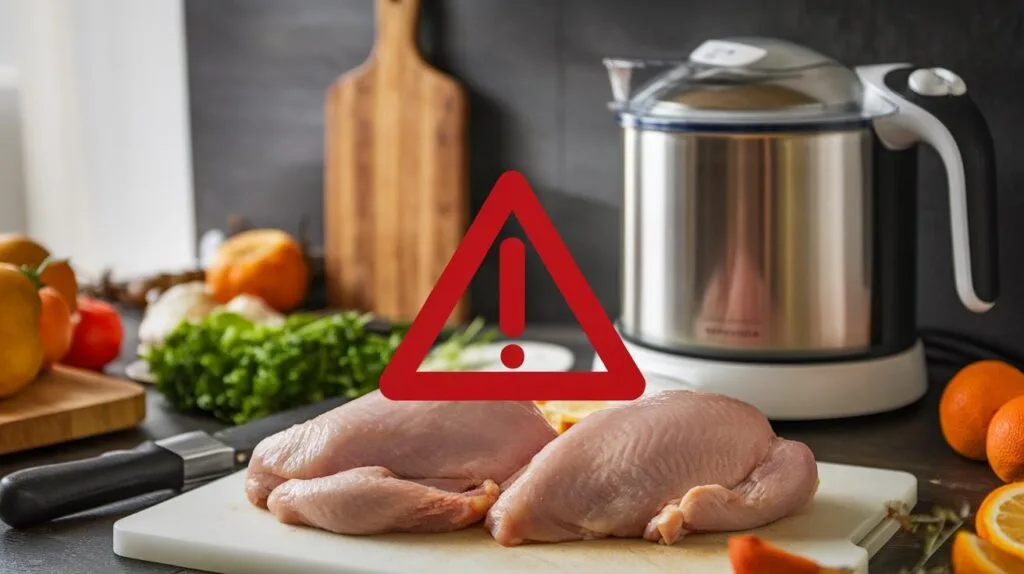
One of the biggest no-nos is adding raw meat or poultry to a soup maker. Unlike slow cookers or pressure cookers, most soup makers don’t reach the high temperatures needed to safely cook raw proteins.
If you want to include meat in your soup, cook it separately beforehand. Add the cooked meat during the blending or reheating stage for a safe and delicious meal.
Starchy Foods: Risks of Over-Thickening
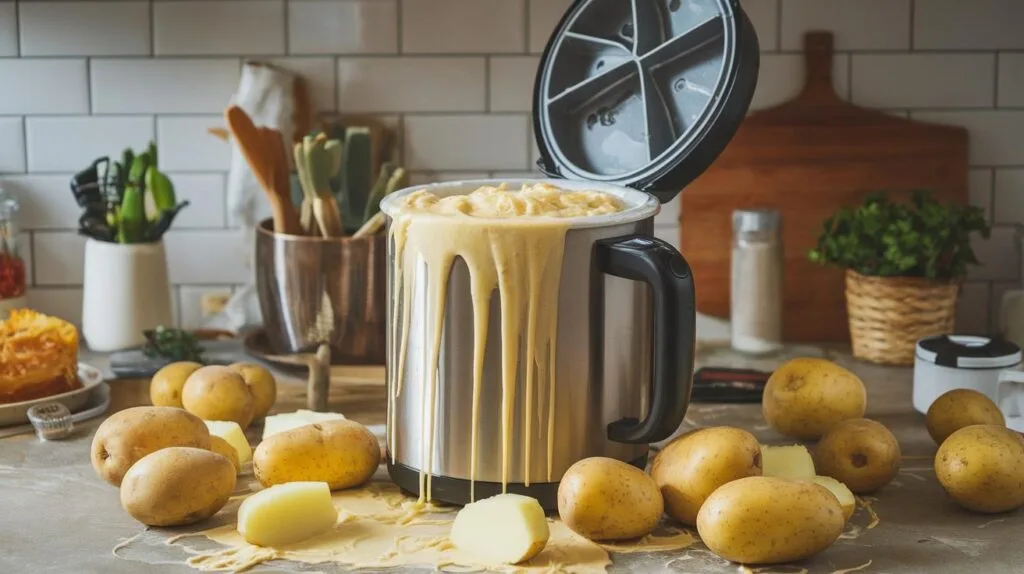
Potatoes, rice, and pasta may seem like natural soup ingredients, but they can be tricky in a soup maker. These starchy items often thicken as they cook, which might lead to clogged blades or a paste-like consistency.
To avoid this, use small quantities or add pre-cooked starches after the blending process. That way, you maintain control over the texture.
Dairy Products: Risk of Curdling

Dairy is another ingredient to approach with caution. Milk, cream, or yogurt can curdle when exposed to high heat, leaving your soup grainy and unappealing.
Instead, add dairy products after cooking, stirring them in just before serving to preserve their smoothness and flavor.
Hard Ingredients: Impact on Blades and Motor
Hard ingredients like nuts, seeds, or raw root vegetables can be tough on your soup maker’s blades. While some models can handle these items in small amounts, overloading them may strain the motor or leave unblended chunks.
A safer option? Soften hard ingredients by pre-cooking or chopping them into smaller pieces before adding them to the appliance.
Foods with Strong Odors: How They Linger
Garlic, onions, and strong spices may enhance flavor, but they can also leave lasting odors in your soup maker. While this doesn’t harm the machine, it can affect future recipes—no one wants smoothie remnants tasting like yesterday’s garlic soup!
To minimize lingering odors, clean your soup maker thoroughly after each use and use stronger ingredients sparingly.
Liquids to Avoid in a Soup Maker
While liquids are essential for soup-making, not all are suitable for a soup maker. Here’s what to skip:
Alcohol: Cooking Risks and Safety
Adding alcohol, even in small amounts, can be risky in a soup maker. The high heat may not fully evaporate the alcohol content, potentially leading to unexpected flavors or a less-than-ideal consistency.
If your recipe calls for wine or spirits, cook it down separately on the stove before incorporating it into the soup maker.
Carbonated Beverages: A Recipe for Disaster
Using carbonated liquids like soda or sparkling water in a soup maker is a big mistake. The fizz can react with the heat and pressure inside the appliance, causing spills or even damaging the machine.
Stick to still liquids such as broth, water, or pre-cooked sauces to avoid unnecessary messes.
Tips for Maintaining Your Soup Maker
A soup maker is an investment in convenience, and like any kitchen gadget, it deserves proper care. By following a few maintenance tips, you can extend its lifespan and keep it functioning at its best.
Cleaning Best Practices After Use
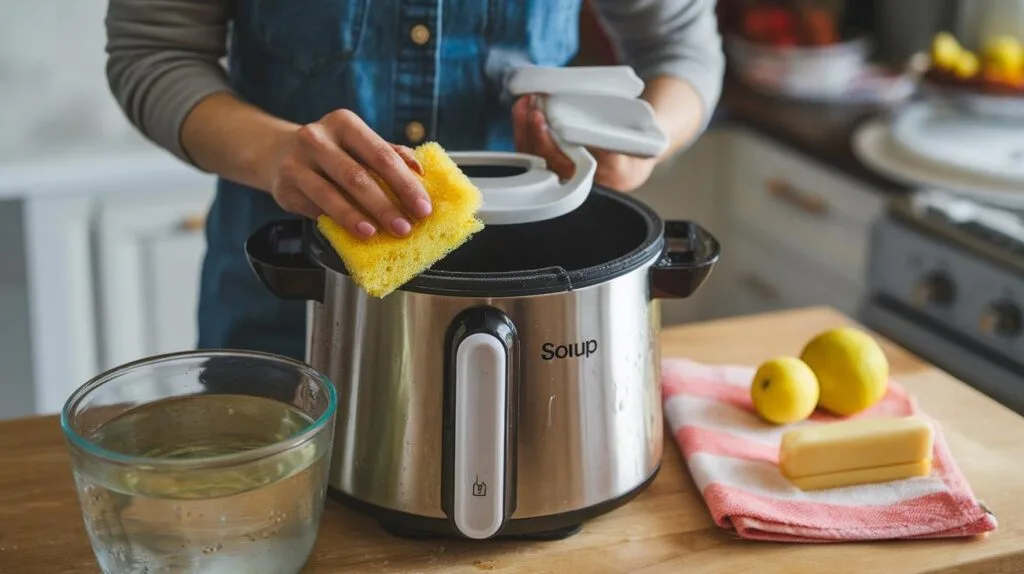
Cleaning a soup maker might seem like a chore, but it’s vital to prevent residue buildup and lingering odors. Most models have a non-stick surface, so cleaning them is relatively easy if done immediately after use.
Start by unplugging the machine and letting it cool down. Use warm, soapy water to clean the interior, and avoid abrasive scrubbers that could damage the surface. Many soup makers also have a self-cleaning feature—simply add water and a drop of detergent, then run the cleaning cycle.
For tough stains or smells, use a mixture of water and vinegar, letting it soak in the appliance for a few minutes before rinsing thoroughly.
Handling Blade-Sensitive Ingredients
The blades are the heart of your soup maker, and they deserve special attention. Overloading the appliance with hard or dense ingredients can dull or damage the blades over time. Always chop harder vegetables like carrots or squash into smaller chunks before adding them.
If the blades appear dull, check your user manual for sharpening or replacement options. Proper blade care ensures consistent blending and prevents mechanical strain.
Common Problems with Soup Makers
Despite their convenience, soup makers aren’t immune to hiccups. Understanding common issues and their solutions can save you time and frustration.
Overheating Issues and Their Causes
Overheating is a frequent problem, often caused by overfilling the machine or using ingredients that are too thick. When the motor works harder than it should, it can shut down to prevent damage.
To avoid this, always respect the maximum fill line and use sufficient liquid to keep the mixture from becoming too dense. If overheating occurs, unplug the appliance, let it cool, and reduce the load during the next use.
Blockages and How to Prevent Them
Clogs can happen when ingredients like rice or pasta expand during cooking, blocking the blades or heating element. To prevent this, cook starchy ingredients separately and only add them once the blending cycle is complete.
Regular cleaning also helps reduce blockages. Make sure no food particles are left in hard-to-reach areas after each use.
Inconsistent Blending: Troubleshooting Tips
If your soup has chunks when it should be smooth, the issue might be with your technique or ingredient choice. Hard or frozen items can challenge the blades, especially if they’re added in large amounts.
To fix this, pre-cook tougher ingredients or thaw frozen ones before using them. Adding liquid gradually during blending can also help achieve a smoother consistency.
Advanced Tips for Maximizing Your Soup Maker’s Potential
Now that we’ve covered what to avoid and how to handle common issues, let’s dive into advanced tips to help you get the most out of your soup maker. Whether you’re experimenting with new recipes or trying to achieve the perfect texture, these strategies will elevate your soup-making game.
Experimenting with Layering Ingredients
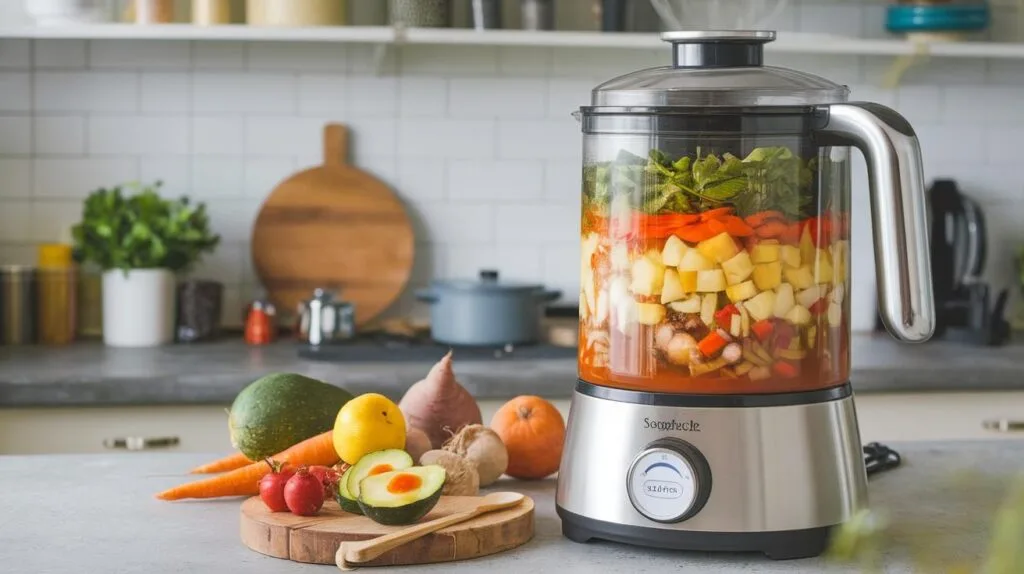
The order in which you add ingredients can make a surprising difference. Start with liquids like broth or water to ensure the blades move freely and heat distributes evenly. Follow with softer vegetables, leaving denser items like squash or sweet potatoes for last. This method helps prevent uneven cooking and promotes a smoother blend.
Perfecting Chunky Soups
If you prefer your soup with a hearty, chunky texture, use the pulse or manual blending option available on many soup makers. To achieve the best results, reserve some cooked ingredients (like beans or vegetables) and stir them in after the blending process. This gives you the ideal mix of smooth and chunky in every bite.
Adding Fresh Herbs and Seasonings
Timing is key when it comes to herbs and spices. Dried spices can be added early, allowing their flavors to infuse as the soup cooks. Fresh herbs, however, are best added at the end to preserve their vibrant taste and aroma. A sprinkle of parsley, cilantro, or dill can transform your soup from good to gourmet.
Incorporating Roasted Vegetables
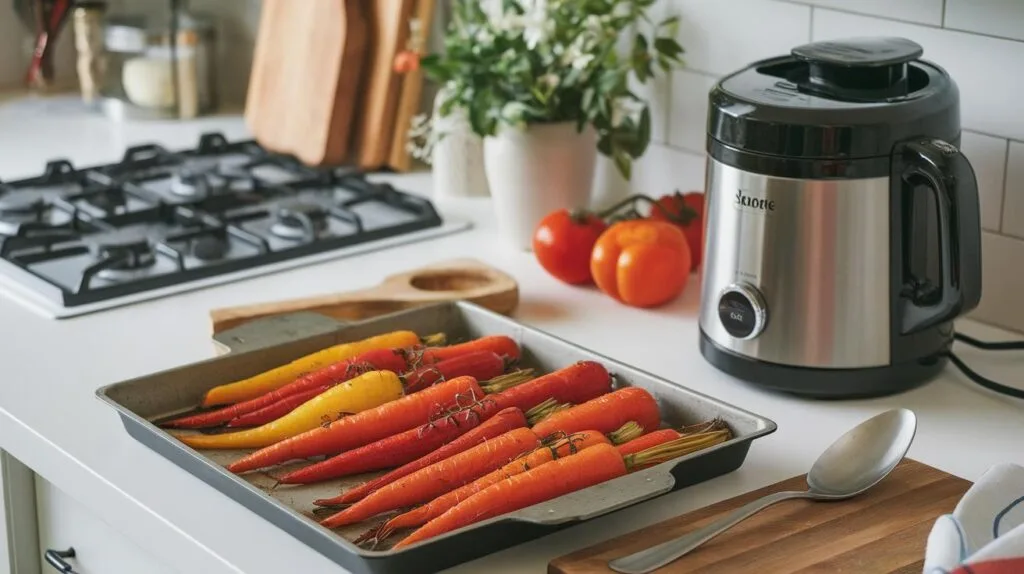
Want richer flavors? Roast your vegetables before adding them to the soup maker. Caramelizing vegetables like carrots, tomatoes, or bell peppers enhances their sweetness and adds a smoky depth that’s hard to replicate with raw ingredients.
Creative Recipes to Try in Your Soup Maker
Looking to spice up your soup repertoire? Your soup maker is a playground for creativity. Here are some fun, foolproof recipes to try:
Creamy Tomato Basil Soup
- Ingredients: Fresh tomatoes, onion, garlic, vegetable broth, fresh basil, and a touch of cream.
- Tips: Roast the tomatoes and garlic beforehand for extra depth, and add the basil at the end for a fresh finish.
Spicy Sweet Potato and Coconut Soup
- Ingredients: Sweet potatoes, coconut milk, ginger, red curry paste, and lime juice.
- Tips: Sauté the curry paste with ginger before adding the liquid for a bolder flavor.
Hearty Lentil and Spinach Soup
- Ingredients: Red lentils, spinach, carrots, onion, garlic, and vegetable broth.
- Tips: Blend half the mixture for a creamy base while keeping the other half chunky for texture.
Soup Maker Troubleshooting: Avoiding Last-Minute Problems
Even seasoned soup maker users encounter challenges. Here’s how to sidestep last-minute issues:
Too Thick or Thin? Fix It Instantly
If your soup is too thick, simply add more liquid—broth, water, or even a splash of milk—until you reach the desired consistency. On the other hand, if it’s too thin, stir in pre-cooked potatoes, rice, or lentils to thicken it up quickly.
Flavor Balancing on the Fly
If your soup tastes flat, don’t panic. A pinch of salt, a squeeze of lemon juice, or a dash of vinegar can bring dull flavors to life. For richness, try adding a pat of butter or a drizzle of olive oil.
Burnt Taste? Salvage the Soup
A burnt taste can happen if ingredients stick to the bottom during cooking. If this happens, transfer the soup to a separate pot immediately, leaving behind any burnt portions. Adding a touch of sweetness, like honey or sugar, can sometimes mask the burnt flavor.
Embracing the Versatility of Your Soup Maker
A soup maker isn’t limited to soups—it’s a multipurpose marvel. Here’s what else you can whip up with it:
Smoothies and Milkshakes
With its blending function, a soup maker can double as a smoothie machine. Combine fruits, yogurt, and a splash of juice or milk for a refreshing drink. Avoid frozen fruits unless you add enough liquid to keep the blades moving freely.
Sauces and Purees
From creamy pasta sauces to baby food purees, your soup maker excels at creating smooth, uniform textures. Cook down tomatoes and herbs for a homemade marinara or blend cooked squash with sage for a velvety sauce.
Desserts Like Custards and Puddings
Feeling adventurous? Use your soup maker to create custards, puddings, or even a simple hot chocolate mix. Ensure the settings align with the required temperature for these treats, and always monitor consistency closely.
Maintaining the Flavor Integrity of Your Soup Maker
After extended use, some soup makers might retain the aroma of strong-flavored dishes. Here’s how to keep your machine fresh:
- Use Baking Soda: Sprinkle baking soda inside the machine, add water, and let it sit for 15 minutes before rinsing.
- Vinegar Soaks: Vinegar is excellent for neutralizing odors. A quick soak followed by thorough rinsing should do the trick.
- Lemon Freshness: Blending water with a few slices of lemon can restore a clean, fresh scent to your appliance.
FAQs
Can I Use Frozen Ingredients?
Yes, but with caution. Frozen ingredients can be too hard for some soup makers, potentially straining the blades or motor. To play it safe, thaw frozen items slightly or cut them into smaller pieces before adding them.
Is It Safe to Use Oils in Soup Makers?
Small amounts of oil can add flavor and texture to your soup, but too much can cause uneven blending or splattering. Stick to recipes that specify oil quantities and add it sparingly.
How to Fix Overfilled Soup Makers?
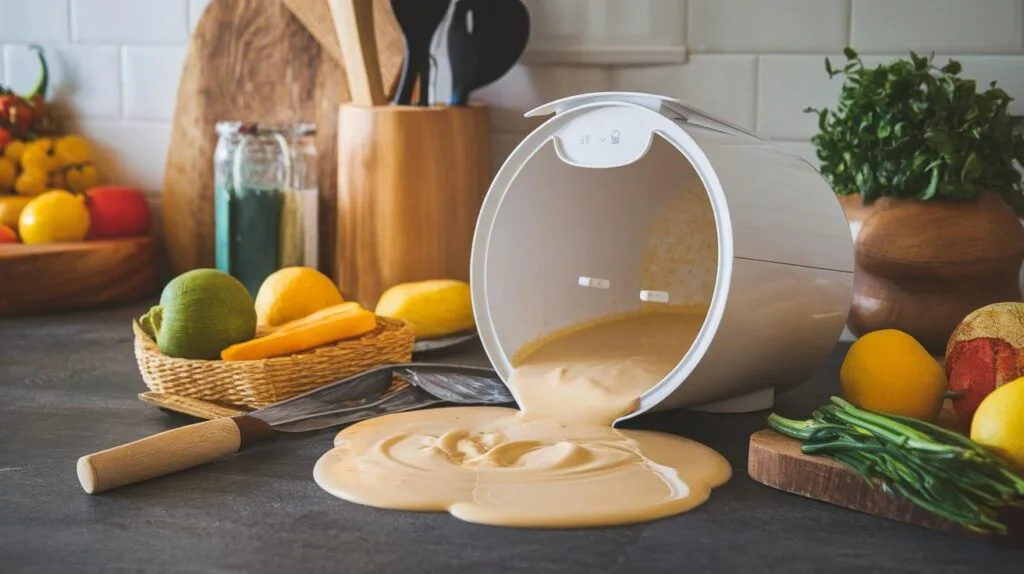
If you’ve overfilled your soup maker, stop the machine immediately to prevent spills or motor damage. Remove some of the contents until the liquid level is below the maximum line. Restart the machine with smaller portions to ensure smooth operation.
Can I Make Smoothies in a Soup Maker?
Many soup makers double as blenders, making them suitable for smoothies. However, avoid using frozen fruits or ice without sufficient liquid, as this can damage the blades.
What’s the Best Way to Add Flavor?
Flavorful soups depend on well-balanced seasoning. Use fresh herbs, spices, and a mix of broth and vegetables for depth. Add salt and pepper gradually, tasting as you go to avoid over-seasoning.
Why Does My Soup Taste Bland?
A bland soup may result from under-seasoning or over-reliance on water as the base. Opt for rich broths, sautéed aromatics, or a splash of vinegar or lemon juice to brighten the flavors.
Conclusion
Using a soup maker should be a seamless, enjoyable experience. By understanding what not to put in your appliance and following essential maintenance tips, you can avoid common pitfalls and whip up flavorful soups every time.
Remember, a soup maker is more than a kitchen gadget—it’s a tool to simplify and enhance your cooking routine. With the right approach, it’ll consistently deliver comfort in a bowl while saving you time and effort.

